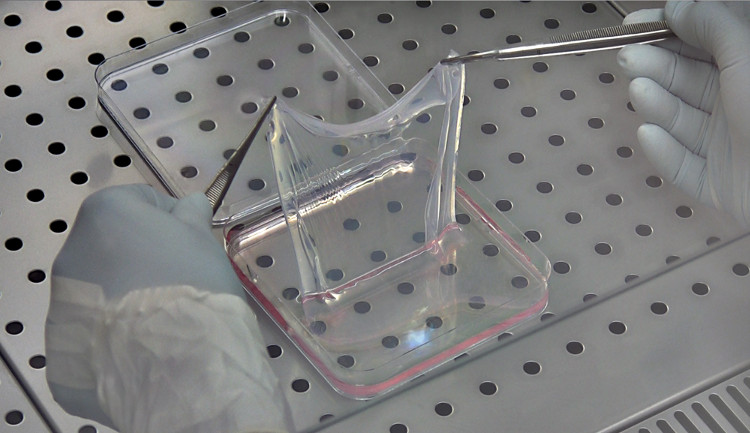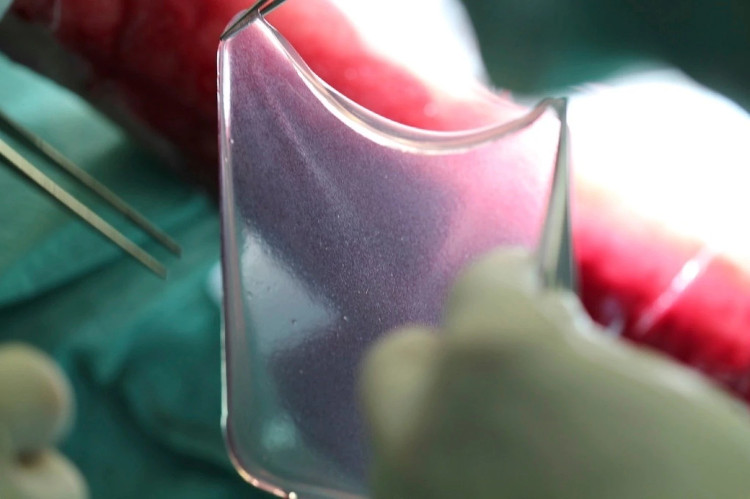'Planting' ... human skin in the laboratory
Like a tree planted, scientists have raised very small pieces of human skin, growing up to cover the body of a 9-year-old boy who lost 80% of skin.
Where to take the skin, the lack of skin for grafting is always the problem that makes the surgeons headaches in the surgery. The same thing happens in dermatological cases, when the skin of the patient is so devastated that it is no longer possible to get the skin to recreate.

Scientists have created enough skin insoles to cover almost all of the boy's body - (photo provided by the research team).
In the case of a 9-year-old Syrian boy named Hassan, who lost 80% of his skin after a rare illness, his chances of living seemed to be zero. He might have to go through the last days of pain in the room. cups for burn patients because there is no skin.

"Map" of Hassan's lost skin - (photo: NATURE).
However, the team led by Professor Michele De Luca, University of Modena, Italy, surprised the scientific community by "successfully planting" a human skin in the laboratory to transplant for Hassan. Everyone protects "planting" the skin because it seems like a plant. Applying stem cell technology, he made the piece of skin only 3.81cm 2 grow into a human skin.

A piece of skin ready to be grafted - (Photo provided by the research team).
The boy Hassan has been ill since 2013, when he and his family have just arrived in Germany as refugees. The genetic disease called epidermolysis bullosa, due to mutations in the LAMB3 gene, causes vesicles to appear all over the body, the skin is fragile and eventually he has lost 80% of the skin, leaving only the scalp and a small piece on the left leg.
Doctors at the Ruhr University Children's Hospital - Bochum (Germany) tried to save him by grafting skin from his father, but were eventually scrapped. The boy had to wait and die in the hospital's burn department. However, luck was smiling at him when the Italian team accepted to do a daring test.

After a period of skin grafting, the boy's skin began to recreate - (photo: NATURE).
In the paper described in Nature, the team genetically engineered cells in the patient's skin piece by providing a healthy version of the LAMB3 gene to the nucleus before growing the piece of skin, leaving the patient ill. after skin grafting.
The new skin with a healthy cuticle was put on Hassan like a blanket in 2015. Since then, the boy has continued to receive special care so that the new epidermis gradually turns into a skin. correction. After transplantation, stem cells in the epidermis continue to function and create deeper layers of skin.

Two years later, Hassan fully recovered - (photo: DAILY MAIL).
Recently, the team was able to confirm that it was successful when Hassan was just determined to fully recover and return to normal life. The 9-year-old boy was able to go to school and revealed that he knew how to play football.
Many other scientists have expressed admiration and astonishment at the results that the Italian team created. In particular, for the first time, stem cell technology and gene technology are combined, creating the magic.
- 'Planting' skin from collagen: The industry's laudable environmental protection effort
- 10 interesting things about human skin
- Smartphones have skin like human skin, shudder
- It is possible to grow vegetables in Antarctica without soil and sunlight
- Human skin was born
- Discovered where mushrooms have the greatest diversity in human skin
- Video: Evolutionary journey of human skin color
- Human skin can 'sniff' the smell
- Why are our skin colors different?
- Planting trees by unmanned aircraft
- Human skin can glow into a watch
- Successfully cultivated mini human brains in the laboratory to try medicine
 Green tea cleans teeth better than mouthwash?
Green tea cleans teeth better than mouthwash? Death kiss: This is why you should not let anyone kiss your baby's lips
Death kiss: This is why you should not let anyone kiss your baby's lips What is salmonellosis?
What is salmonellosis? Caution should be exercised when using aloe vera through eating and drinking
Caution should be exercised when using aloe vera through eating and drinking